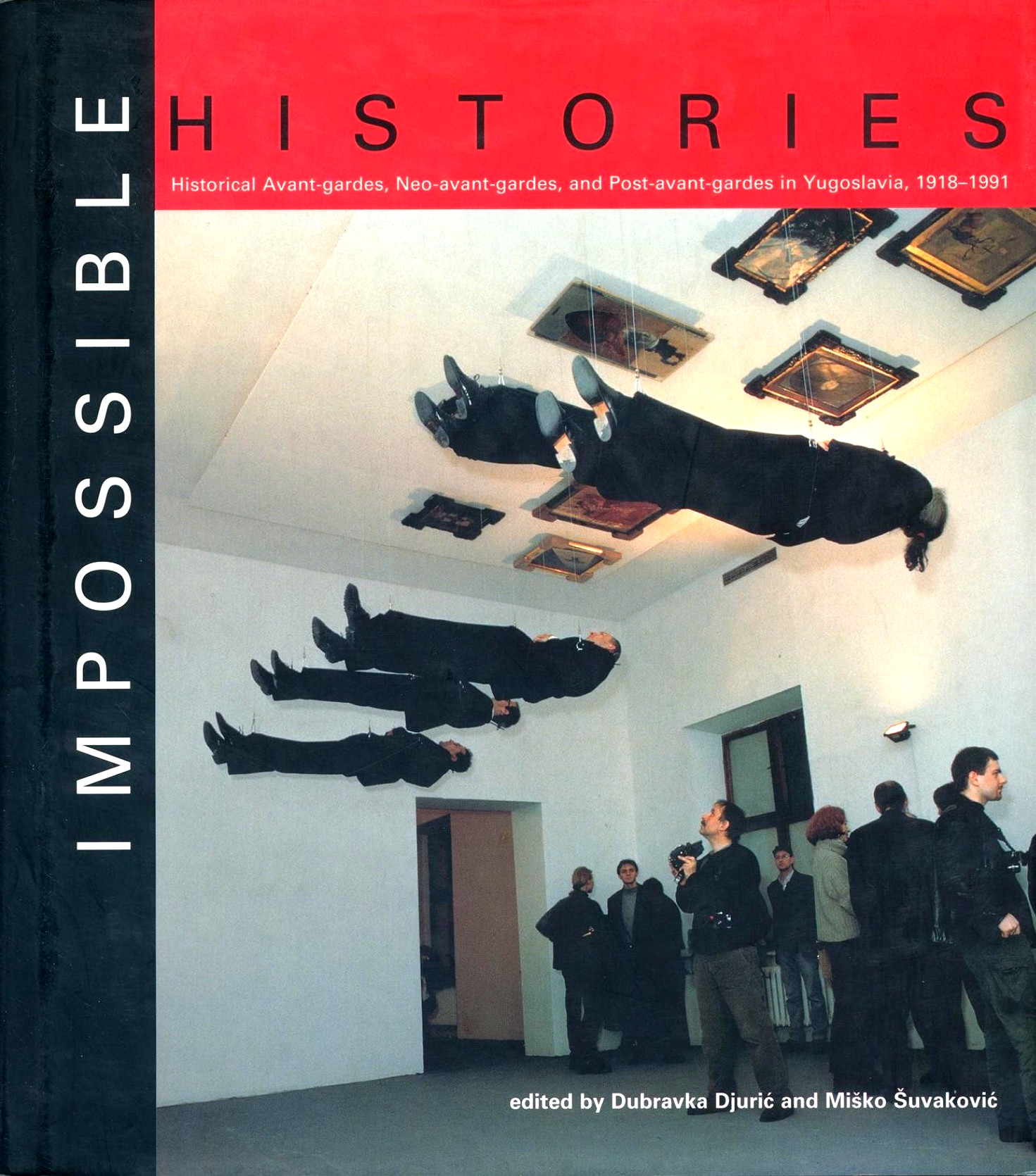Dubravka Djurić, Miško Šuvaković (eds.): Impossible Histories: Historical Avant-gardes, Neo-avant-gardes, and Post-avant-gardes in Yugoslavia, 1918-1991 (2003)
Filed under book | Tags: · architecture, art history, avant-garde, conceptual art, literature, manifesto, music history, neo-avant-garde, post-avant-garde, postmodern, retro-avant-garde, video art, yugoslavia

“Impossible Histories is the first critical survey of the extraordinary experiments in the arts that took place in the former Yugoslavia from the country’s founding in 1918 to its breakup in 1991. The combination of Austro-Hungarian, French, German, Italian, and Turkish influences gave Yugoslavia’s avant-gardes a distinct character unlike those of other Eastern and Central European avant-gardes. The book explores movements such as Belgrade surrealism, signalism, Yugo-Dada, and zenitism; the groups Alfa, Exat 51, Gorgona, OHO, and Scipion Nasice Sisters Theater; or the magazines Danas, Rdeči pilot, Tank, Vecnost, and Zvrk.
The pieces in this collection offer comparative and interpretive accounts of the avant-gardes in the former Yugoslavian countries of Croatia, Serbia, and Slovenia. The book is divided into four sections: Art and Politics; Literature; Visual Art and Architecture; and Art in Motion (covering theater, dance, music, film, and video). All of the contributors live in the region and many of them participated in the movements discussed. The book also reprints a selection of the most important manifestos generated by all phases of Yugoslav avant-garde activity.”
Publisher MIT Press, 2003
ISBN 0262042169, 9780262042161
xviii+605 pages
via agitprop
Reviews: Suzana Milevska (Springerin, 2004), Matthew S. Witkovsky (caa.reviews, 2004), Yevgeniy Fiks (Art Journal, 2004), Tyrus Miller (Modernism/modernity, 2005), Igor Marjanović (Design Issues, 2007).
PDF (22 MB)
Comment (0)Marc James Léger (ed.): The Idea of the Avant Garde: And What It Means Today (2014)
Filed under book | Tags: · activism, aesthetics, architecture, art criticism, art history, avant-garde, film, intermedia, literature, music, performance, photography, theatre

“This book is premised on the view that the idea of the avant garde has an increased importance in these times of global political crisis. Much cultural production today is shaped by a biopolitics that construes all creative and knowledge production in terms of capital accumulation. A different kind of culture is possible. This collection of writings, essays, interviews and artworks by many of today’s most radical cultural practitioners and astute commentators on matters avant garde mediates the different strategies and temporalities of avant-garde art and politics. Tracing diverse genealogies and trajectories, the book offers an inter-generational forum of ideas that covers different arts fields, from visual art, art activism, photography, film and architecture, to literature, theatre, performance, intermedia and music.”
Texts by Marc James Léger, Adrian Piper, Andrea Fraser, David Tomas, Catherine Lescarbeau, Hal Foster, Laura Mulvey, Bruce LaBruce, Santiago Sierra, Derek Horton, Christine Wertheim, Lyn Hejinian, Marjorie Perloff, Wu Ming 2, Nikolaus Müller-Schöll, Rabih Mroué, Judith Malina, Moe Angelos, Bill Brown, The Errorist International, Jonas Mekas, Thomas Elsaesser, Alexander Kluge and Oskar Negt, Travis Wilkerson, Evan Mauro, Mikkel Bolt Rasmussen, Gene Ray, John Roberts, Zanny Begg and Dmitry Vilensky, Owen Hatherley, Michael Webb, Mitchell Joachim, Beatriz Colomina, Boris Groys, Vitaly Komar, Victor Tupitsyn, Gregory Sholette and Krzysztof Wodiczko, Critical Art Ensemble, BAVO, Alexei Monroe, Jean-Hervé Péron, Chris Cutler, Charles Gaines, Jason Robinson, Sara Marcus, Cosey Fanni Tutti, Thanos Chrysakis, Kim Cascone, Marc Couroux, Thérèse Mastroiacovo, Chrysi Papaioannou, and Bill Dane.
Publisher Manchester University Press, Manchester, with Left Curve, Oakland, CA, 2014
ISBN 9780719096914, 071909691X
285 pages
Editor
Exhibition (2018)
Publisher
WorldCat
PDF (16 MB)
Comment (0)Bauhaus Reviewed 1919-1933 (2007)
Filed under sound recording | Tags: · architecture, art history, bauhaus, design

“This full-length archive CD explores the highly influential Bauhaus school of art and architecture, which operated in Germany between 1919 and 1933.
The spoken word element is centred on a revealing talk by Walter Gropius, the architect and theoretician who founded the Bauhaus in 1919. The album also includes contributions from the school’s third and final director, architect Ludwig Mies van der Rohe, as well as teacher Josef Albers. All interviews are in the English language.
The musical content features piano pieces written between 1919 and 1925 by six composers associated with the Bauhaus: Arnold Schoenberg, Josef Matthias Hauer, George Antheil, Stefan Wolpe and H.H. Stuckenschmidt. Several reflect serialism and 12-tone technique; most are performed by Steffen Schleiermacher on piano.
With a generous running time of 72 minutes, the CD booklet also features archive Bauhaus images and liner notes by James Hayward.”
Publisher LTM Recordings (LTMCD 2472), 2007
ISBN 9780955433542
72 min
Reviews: Boomkat (2007), Stephen Eddins (AllMusic, 2008).
MP3s, MP3s (updated on 2017-10-15)
Comment (0)
